Effects of fire on vegetation was the main theme for this month’s nature ramble as we visited the Anglesea Bushland Reserve where an ecological burn had been completed on half of the reserve in November 2021.
It was so exciting to see the regrowth of the various species just six months after the burn was carried out. We certainly have had good rainfall in this time and the plants have responded appropriately. We have a comprehensive plant list for this reserve compiled over a period of almost 30 years and we managed to find half the documented species as we walked through the area. Some of the emerging plants challenged us as the new growth following fire can be quite confusing. It is sometimes just so different from the mature growth of our heathland plants.
It will be interesting to add to this list as the seasons change and more plants emerge. Mandy’s sharp eyes spotted a new record for the area – a tiny sprig of Slender Platysace, Platysace heretophylla with its minute white flowers.
 Platysace heretophylla var. heretophylla
Platysace heretophylla var. heretophylla
 Group checking leaves of plants in the burnt area.
Group checking leaves of plants in the burnt area.
It was fun looking at the leaves of the various species that were easy to observe in the open areas.

Margaret shows the soft foliage of Honeypots, Acrotriche serrulata, emerging in the burnt area. It is so different to the prickly vegetation of mature bushes.
We know the reserve is home territory for Southern Brown Bandicoots and we were thrilled to find what we believe were their diggings in the area. They could have been diggings from Bush Rats but we felt pretty confident that they were those of the Southern Brown Bandicoot.
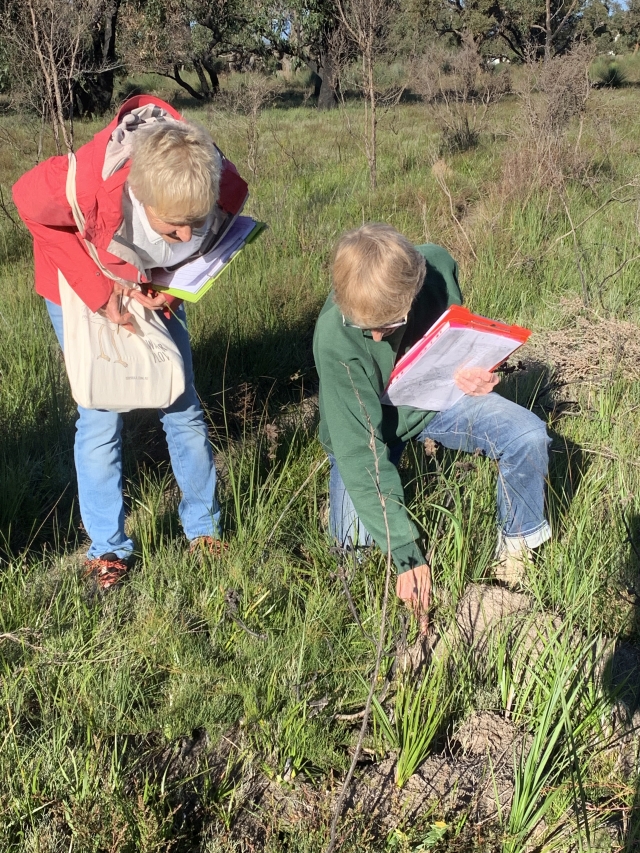 Margaret and Gail observe the diggings believed to be those of Southern Brown Bandicoot
Margaret and Gail observe the diggings believed to be those of Southern Brown Bandicoot
Fire not only stimulates growth of our indigenous flora but also of undesirable species. We added a number of introduced species to our plant list. An area of wattle seedlings was a worry. Some could be identified as Sweet Wattle, Acacia suaveolens, but there were certainly some others that will need to be removed.
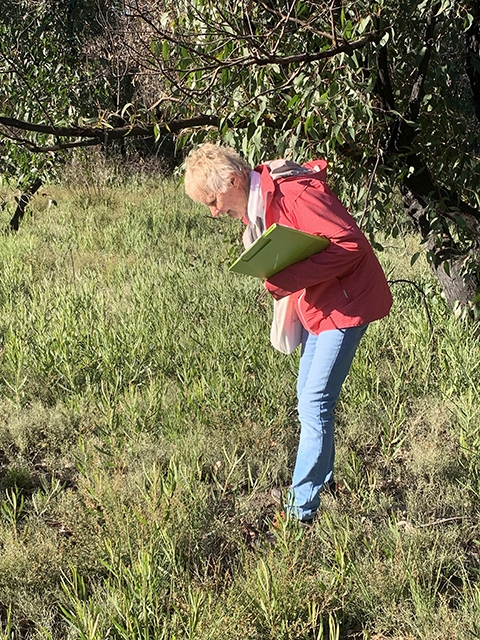 Gail observes a large area of wattle seedlings
Gail observes a large area of wattle seedlings
 Prickly Crytpandra
Prickly Crytpandra
The Prickly Cryptandra, Cryptandra tomentosa, was coming into flower, while the Erect Guinea Flower, was keen to show some early bright yellow flowers.
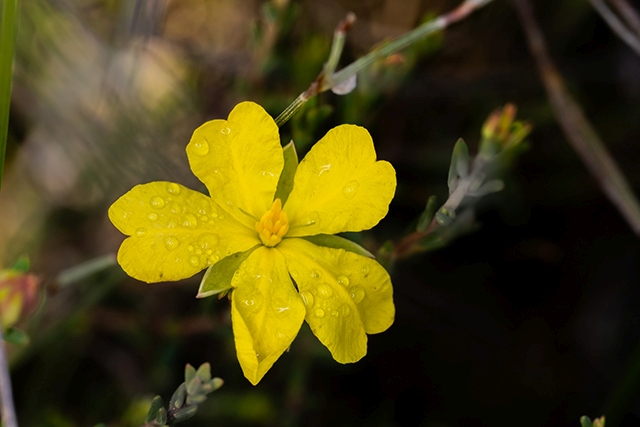 Erect Guinea Flower
Erect Guinea Flower

There was one plant that we were unfamiliar with. We felt it might be Hedgehog Grass but are awaiting confirmation. It was certainly bristly in appearance.
Carl later identified it as Grey-beard Grass, Amphipogon strictus var. setifer.
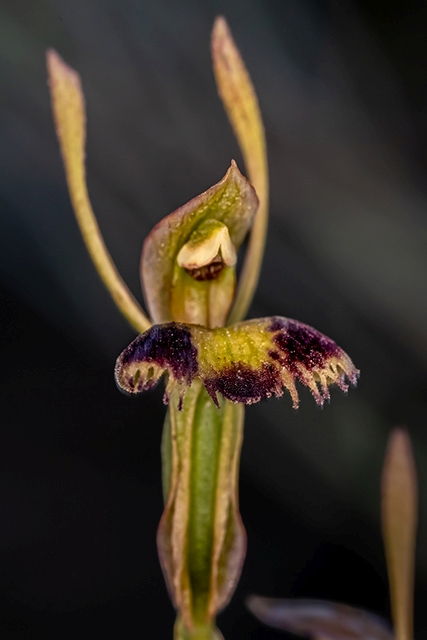 Fringed Hare Orchid
Fringed Hare Orchid
With Margaret as leader the group did expect to see at least one orchid species in flower and we were rewarded with great viewing of the Fringed Hare Orchid, Leporella fimbriata, with just so many distinctive red-veined leaves and the dainty flowers almost hiding amongst the trackside vegetation. They were not in the burnt area but possibly the smoke had encouraged germination as there were certainly many more than usual. The erect petals, or the Hare’s ears, end in reddish-brown, club-shaped tips with the glands exuding a scent that attracts male flying Baby Bull-ants, Myrmercia urens, which pollinate the flower. We looked but were not successful in observing any ants – although it was a nice day, perhaps not warm enough to encourage pollination.
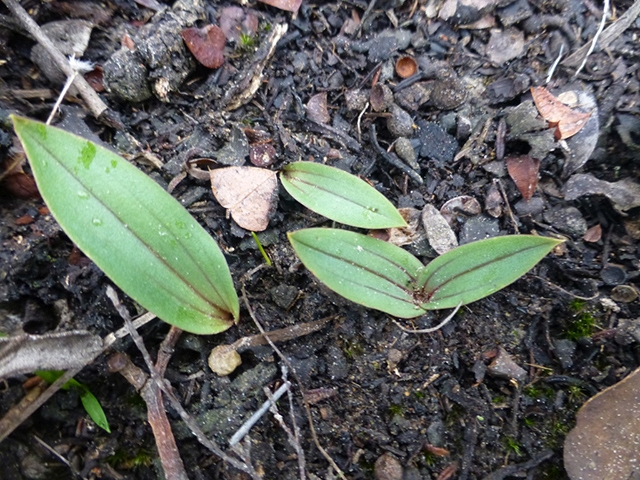 Fringed Hare Orchid leavew
Fringed Hare Orchid leavew
We also observed a few Bearded Midge Orchids, Corunastylis morrisii, but they had finished flowering for this year.
It was interesting to walk through the unburnt area and to compare the vegetation of the two areas. The plan is to burn the second section in a few years time once the first section has recovered.
Marg MacDonald
Images: Kaye Traynor, Paul Wright